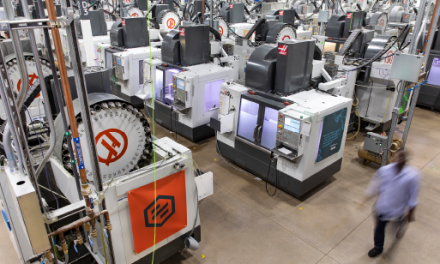Sensors Reveal Ways to Save the Planet

By Sravani Bhattacharjee, TTI MarketEye
 In 2023, the global average annual carbon dioxide concentration reached a record high of 421 ppm, a 20% increase compared to 1990. Deficits in water, food, and electricity are becoming more common globally. Climate change, pollution and resource deficits at a global scale have made the urgency of environmental sustainability more pronounced than ever. This crisis is a concern and a call to action for policymakers, businesses, researchers, and engineers, making sustainability a central component of system design.
In 2023, the global average annual carbon dioxide concentration reached a record high of 421 ppm, a 20% increase compared to 1990. Deficits in water, food, and electricity are becoming more common globally. Climate change, pollution and resource deficits at a global scale have made the urgency of environmental sustainability more pronounced than ever. This crisis is a concern and a call to action for policymakers, businesses, researchers, and engineers, making sustainability a central component of system design.
Sustainable solutions minimize environmental and health impacts by optimizing resource utilization and facilitating net zero emissions.
Role of IoT and Sensors
Innovations in the Internet of Things (IoT) and sensor technologies drive a profound shift in environmental monitoring, inspiring hope for a more sustainable future. Traditional environmental data collection processes, with their labor-intensive nature and irregular measurements, are being replaced by a network of connected sensors and devices that continuously collect and communicate data on environmental parameters. This shift expands new ways to design sustainable solutions.
Using IoT, system designers can now build sustainable solutions by deploying application-specific, high-precision sensors for granular measurement of environmental parameters, including temperature, humidity, toxic gas, air and water quality, and soil conditions.
Sensors, even in remote areas and hazardous terrains, can communicate using low-power wireless connectivity. This comprehensive coverage of sensor data, integrated with predictive analytics, can forecast environmental trends and potential hazards before they escalate into more significant crises.
Current Deployments
There are already instances of sustainable solutions that help gauge the potential of sensor-based environmental sustainability.
Precision Agriculture
The global market for precision agriculture, using sensor technology, IoT connectivity, and analytics, is projected to reach $25.4 billion by 2028. In precision agriculture, sensors are deployed across farms and water irrigation systems to collect and transmit data on soil moisture, nutrient levels, and weather patterns. Farmers can monitor the data and significantly reduce water, fertilizer, and pesticide usage. This minimizes the environmental impact of farming practices while boosting crop yields.
Air Quality Monitoring
Air quality monitoring systems allow municipalities and utility companies to use sensor data to monitor and manage air quality. Gas, humidity and temperature sensors at various sites collect real-time data on pollutant levels in the air. These systems also help detect toxic methane leaks in pipelines and prioritize repairs to mitigate environmental and health risks.
Forest Fire Prevention
Sensors deployed in forests help utility companies and public agencies monitor environmental parameters, such as temperature, humidity, and smoke levels. Early detection of forest fires is critical for rapid response and containment. It also helps protect ecosystems and biodiversity and mitigate the economic and social impacts of forest fires.
Water Resource Management
Sustainable IoT solutions use industrial-grade humidity sensors to conserve water while efficiently preventing water leak damage. This is a valuable application in smart city projects where efficient water distribution, usage, and leak prevention are critical.
Environmental Building Monitoring
In smart buildings, IoT systems use electrochemical, humidity, and gas sensors to measure water quality and harmful gas within the building. Analyzing the sensor data helps building management control resource usage while preventing environmental risks.
Design Considerations
Specific considerations are essential in designing sustainable solutions with sensors.
Granular Visibility
The universe of sensors is vast. For instance, to monitor air quality, a wide selection of sensors exists to measure gas, temperature, humidity, particles, and oxygen. Again, gas sensors can measure specific gases like carbon monoxide or ethylene oxide. It is essential to narrow the search for granular insights.
Precision
Environment parameters require sensors capable of high-resolution measurements. For example, sensors must detect minute changes in air or water quality to predict water contamination before the pollutants escalate into more significant crises. The precision and frequency of the collected data determine the reliability of the solution for environmental assessment and decision-making.
Resilience
Environmental sensors are often placed in remote locations with hazardous conditions. Temperature sensors in a coal mine are subject to high temperatures, dust, and dirt. The sensor electronics must be resilient to harsh environments and physical damage. Sensor casing and mounting also play an essential role in withstanding rugged environments.
Energy Efficiency
Power consumption is an important consideration in sustainable system design. Most environmental sensors are battery-powered. Energy-efficient electronics and rechargeable batteries will prolong sensor life and minimize e-waste.
Power efficiency is a significant edge of energy harvesting sensors. These sensors capture ambient energy (solar, thermal, or even mechanical vibrations) from their surroundings and convert it into electricity. Energy harvesting sensors can operate autonomously for an extended period, making them a low-maintenance alternative to traditional sensors, especially when deployed in less accessible remote areas like underwater or high-altitude locations.
Connectivity
Sensors for large-scale sustainable solutions like smart cities or Industry 4.0 applications must be able to connect and communicate data over wired or low-power wireless networks.
Conclusion
Sensor-based sustainable solutions integrated with data analysis and insights enable stakeholders to monitor trends and implement proactive measures for environmental protection. TTI is a leading supplier of reliable and resilient sensors, empowering designers to build systems that enhance sustainability.











